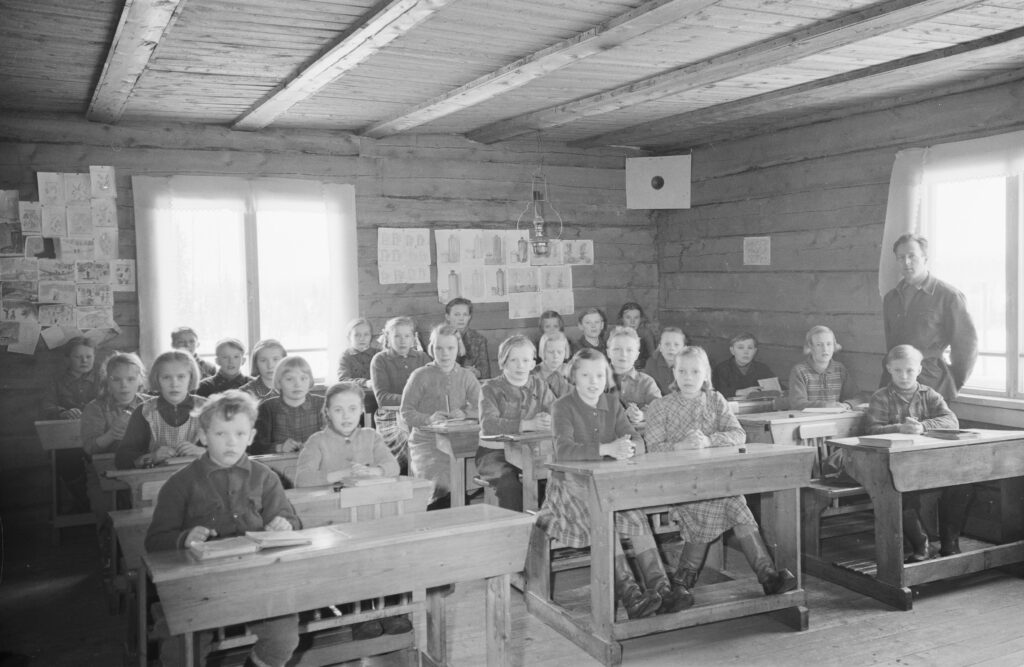The church, along with homes, bore sole responsibility for teaching children until the 19th century. The first decision to establish a folk school was made in Kuusamo in 1874. At that time, the municipality was not ready for this, and the school was founded by a private support association. According to the documents, three “gentlemen” and 24 “common men” started the first folk school supported by society on September 1st, 1876. On that date, it can be considered that the public authority-maintained school started in Kuusamo. Despite this, the popular education given by the church continued and especially the importance of the circuit schools maintained by the church in the vast remote area was great. The circuit school organized by the church was held in Kuusamo until the 1940s.
The church town’s folk school was allowed to operate for almost 20 years as the parish’s only folk school. The next public school founded in Kuusamo was the so-called traveling public school. This kind of exceptional public school in comparison to the entire country operated for a decade alternately in several different villages. At the turn of the century, in addition to the above-mentioned folk schools, there were folk schools operating in in Posio’s Ahola, Tavajärvi and Vasaraperä.
In the winter of 1922, thousands of refugees arrived from White Sea Karelia, who had to leave their home region due to chaotic conditions. A special refugee school was organized in the church town’s school, with more than 40 children.
A significant change took place in the development of the folk school after the enactment of the Compulsory Education Act of 1921. Municipalities had to draw up an implementation plan for compulsory schooling, which would bring a school within the reach of every child of compulsory schooling age. The number of schools also increased in Kuusamo, but the municipality still had to apply for a postponement of the implementation of compulsory education. At the time, the Compulsory Education Act only required those students whose home was located at a maximum distance of five kilometres from the school to attend school. Before the Second World War, numerous families from Kuusamo were still outside of compulsory schooling.
On the eve of the Winter War, about 30 schools were operating in Kuusamo, most of which were so-called reduced schools.
